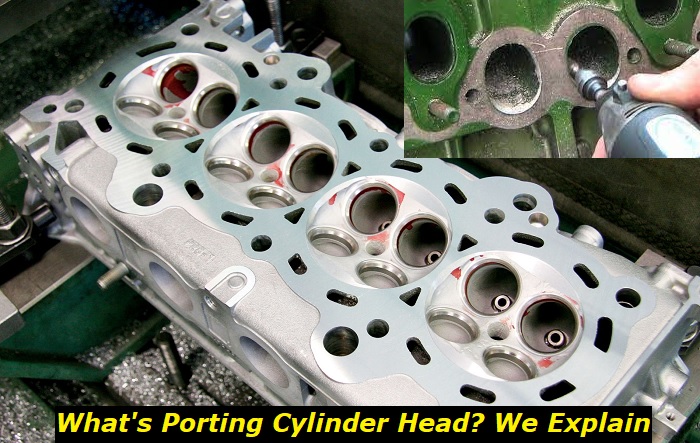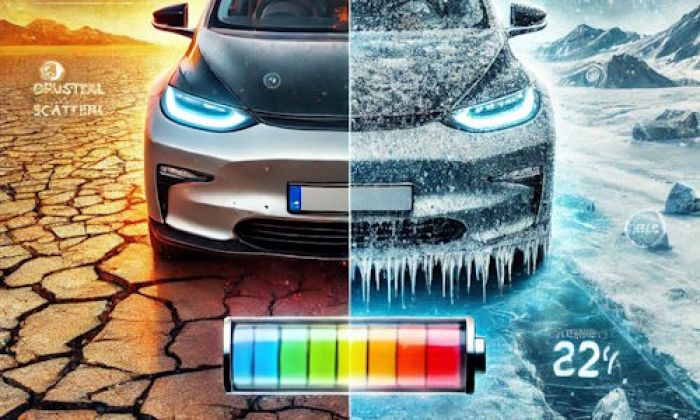Cylinder head porting is the process of increasing the size and smoothing out the rough edges of cylinder head intake and exhaust ports to increase airflow. Improved airflow results in better combustion, which in turn, leads to increased horsepower, torque, and overall engine performance. This process, however, has its benefits, shortcomings, and significant cost implications.
Engine upgrades highlights
- Commonsystems:fuel supply, air supply, exhaust, software
- Average prices:$500 - $6,500
- Average waiting time:1 - 21 days
- Commonreasons:higher power and torque
- DIY mods:just minor things, usually plug & play
- Level of satisfaction:medium

What Is the Principle Behind Cylinder Head Porting?
Cylinder head blocks are usually mass-producing using the casting process, whereby molten iron or aluminum alloy is poured into a mold and allowed to cool. This process leaves behind casting imperfections such as rough edges, especially in the cylinder port's bowl area between the valve seat and the valve guide.
The presence of these rough edges and imperfections in the cylinder head will introduce turbulence and restrict the smooth flow of air into the combustion chamber. Porting the cylinder head will remove these rough patches and small restrictions thereby optimizing the volumetric intake and exhaust flows of each cylinder.
Besides the bowl area, the following areas within the cylinder head are usually targeted during porting:
- Exhaust ports: This is where the velocity of hair exiting the cylinder is highest. Material is usually shaved off from this area to increase volumetric flow.
- Inlet ports: Shaving and polishing this area will relieve the port of ruts and rough edges, thereby minimizing the disturbance to fluid flow. However, a certain level of surface roughness is usually retained to encourage the evaporation of fuel deposited on the port sides.
- Valve seat: This area is polished to create a perfect seal with the valves when closed, thereby increasing the volumetric efficiency of the engine.
- Valve throat pocket: Smoothing and polishing the edges and chamfers in this area will widen the valve throat and promote efficient flow to the cylinder head.
- Combustion chamber: The top area of the combustion chamber is polished to allow for a smooth transition of the combusted air/fuel mixture from the cylinder into the exhaust manifold.
Porting Cylinder Head Pros
Porting cylinder heads has several benefits which include increased horsepower, improved fuel efficiency, and enhanced throttle response.
1) Improved Airflow Efficiency
Porting a cylinder head will widen the diameter of the intake and exhaust ports and remove any rough edges. This means that in addition to increased flow, any turbulence-causing restrictions will be eliminated. And as a result, the flow of air and exhaust gases will be smoother and more streamlined.
2) Increased Overall Engine Efficiency
Porting enhances overall engine efficiency by increasing intake airflow and improving the engine's exhaust stream. Improved intake flow and reduced turbulence in the intake port ensure that there is better air-fuel mixing, which results in more efficient combustion. Similarly, ported exhaust ports mean faster removal of exhaust fumes, thus a lower exhaust back pressure and less burden on your engine.
3) Increased Horsepower and Torque
The power an internal combustion engine can generate is directly related to the rate of intake of air and removal of exhaust gases through its ports. Simply put, the more the air inflow into the engine, the more fuel that can be burned, and the more power the engine can produce.
And since the porting process results in higher air intake and exhaust removal rates, you can look forward to gaining a little more power from your engine. When done properly, porting can yield up to a 10% increase in horsepower and torque. As such, you can look forward to an additional 20 to 30 horsepower after a good porting job.
However, don't expect to witness huge leaps in horsepower after your first porting job. This is because the gains in horsepower are generally dependent on the original state of the cylinder head as well as the quality of the workmanship.
4) Improved Throttle Response
Throttle response refers to the amount of time an engine takes to respond to the accelerator pedal. Simply put, it is the time lapse between depressing the accelerator pedal and getting a corresponding power increase from the engine.
By increasing the air intake rate, and optimizing exhaust flow dynamics, cylinder head porting will ensure the engine is in a position to quickly adjust to throttle changes. This means that a ported engine will be capable of yielding sharper and immediate throttle responses, a feature that can come in handy during racing or when overtaking.
5) Improved Fuel Efficiency
As earlier mentioned, cylinder head porting results in improved airflow, which in turn, leads to better fuel combustion. Improved fuel combustion means there will be less unburnt fuel in the exhaust components. Moreover, cylinder head porting will result in streamlined airflow in the combustion chamber, thus reducing drag and the amount of fuel the engine burns at specific speeds.
Porting Cylinder Head Cons
Like any other car modification, cylinder head porting has its downsides. Some of these downsides associated with cylinder head porting include:
1) It is Expensive and Complex
One of the first disadvantages of cylinder head porting that'll be thrown your way is its cost and complexity. Cylinder head porting is, without doubt, a complex, labor-intensive process that requires specialized knowledge and skills as it involves precise reshaping and smoothing of intake and ports.
This means that in order to gain more horsepower via cylinder head porting, you will either have to spend several hours on end doing the work yourself or hire a professional to handle the process.
2) Reduced Low-End Torque
Cylinder head porting is typically aimed at improving horsepower and torque at high RPMs meaning it might inadvertently sacrifice low-end torque. As a result, the engine may struggle to deliver sufficient acceleration at lower RPMs, making it struggle to get moving quickly from a stop or idling situation.
This means that, although porting can grant your engine more power for high-speed driving situations, you may end up struggling to move in low-speed zones such as in traffic stops.
3) It Can Result in Damage
When not done properly, cylinder head porting can have adverse effects on engine performance. For instance, excessive removal of materials from one of the ports may disrupt the delicate balance of airflow into the engine cylinders, thus lowering engine efficiency.
4) Voidance of Factory Warranty
Porting your engine's cylinder head will automatically render its warranty void. This is because manufacturers don't normally cover modifications that alter the original design of their products. As such, if you were to port the cylinder head of your new car, you will be potentially forfeiting its warranty coverage.
How Much Will It Cost to Port a Cylinder Head?
The cost of porting a cylinder head typically varies depending on factors such as the cylinder head type, the level of porting needed, the geographical location, and the level of expertise needed. That said, for a good porting job, expect to part ways with anywhere between $200 and $2500.
Here is a closer look at some of these variable factors, and how they contribute to the overall cost of cylinder head porting:
1) Cylinder Head Type
No two engine cylinder heads are similar, meaning each one will have different fine-turning requirements to achieve the desired effect. Simply put, some cylinder heads will require more intricate polishing and modifications than others. As a result, they will be more costly to port, and will generally drive up the overall cost of the porting process.
2) Level of Porting Needed
There are four levels or stages of porting that can be done on a cylinder head. Each level has specific deliverables and is priced separately. These levels are:
- Stage I: This is the most basic level of porting and involves a port match and a bowl stage. It typically costs around $160.
- Stage II: Also known as the "strip" or "street" port job. Also known as the "strip" or "street" port job. This stage involves intake opening port matching and polishing the bowl area and typically costs around $320.
- Stage III: Also known as the "full port and polish stage" and typically costs around $560. It involves porting the bowls, profiling the combustion chambers, and port matching.
- Stage IV: This level of porting will include more precise profiling of the combustion chamber, a port match intake, and a fully ported exhaust and exhaust area. Stage IV porting will cost around $800.
3) Geographical Location
The cost of porting a cylinder head will vary depending on your location and local market conditions. This locational difference in cost is typically tied to the variation of labor costs from one area to another. That said, expect to pay more for a cylinder head porting job in an urban area compared to a rural area.
4) Reputation of Porting Professional
Different porting professionals or porting shops have different levels of skills and reputations. These skills and reputations are usually reflected in their pricing. Therefore, expect to pay a higher fee when engaging the services of experienced porting professionals with proven track records.
Final Thoughts
Cylinder head porting is one of the few methods you can use to increase your engine's airflow, and as a result, get a few more horsepower out of it, and enhance its overall efficiency. However, the process is quite costly and has its downsides. It is, therefore, advisable to weigh its pros, cons, and cost implications before proceeding with it.
About the authors
The CarAraC research team is composed of seasoned auto mechanics and automotive industry professionals, including individuals with advanced degrees and certifications in their field. Our team members boast prestigious credentials, reflecting their extensive knowledge and skills. These qualifications include: IMI: Institute of the Motor Industry, ASE-Certified Master Automobile Technicians; Coventry University, Graduate of MA in Automotive Journalism; Politecnico di Torino, Italy, MS Automotive Engineering; Ss. Cyril and Methodius University in Skopje, Mechanical University in Skopje; TOC Automotive College; DHA Suffa University, Department of Mechanical Engineering






Add comment